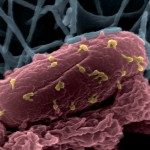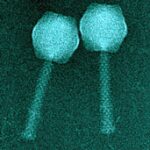Lien vers Pubmed [PMID] – 38398068
Lien DOI – 10.3390/biomedicines12020466
Biomedicines 2024 Feb; 12(2):
The development of bacteriophages (phages) as active pharmaceutical ingredients for the treatment of patients is on its way and regulatory agencies are calling for reliable methods to assess phage potency. As the number of phage banks is increasing, so is the number of phages that need to be tested to identify therapeutic candidates. Currently, assessment of phage potency on a semi-solid medium to observe plaque-forming units is unavoidable and proves to be labor intensive when considering dozens of phage candidates. Here, we present a method based on automated pipetting and phage drop-off performed by a liquid-handling robot, allowing high-throughput testing and phage potency determination (based on phage titer and efficiency of plaquing). Ten phages were tested, individually and assembled into one cocktail, against 126 Escherichia coli strains. This automated method was compared to the reference one (manual assay) and validated in terms of reproducibility and concordance (ratio of results according to the Bland and Altman method: 0.99; Lin’s concordance correlation coefficient: 0.86). We found that coefficients of variation were lower with automated pipetting (mean CV: 13.3% vs. 24.5%). Beyond speeding up the process of phage screening, this method could be used to standardize phage potency evaluation.


